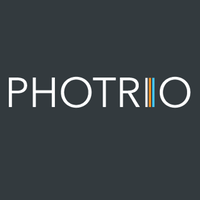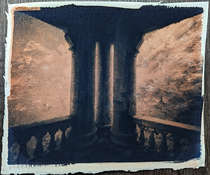Hi Andrew,
Welcome back!
The process described in OP works fine and I've tested it on a variety of papers including Schut (courtesy @koraks), Canson Montval 300 gsm, Magnani Toscana 300 gsm, Magnani Velata 200 gsm, Chitrapat 440 gsm, Fabriano Bristol, Strathmore 300 Bristol, Brustro Bristol, Canson XL Marker, Brustro Marker, Strathmore Layout Bond, Copier Bond paper and even the lowly Butter Paper. Colour palette varies somewhat across papers mostly due to the presence of the buffer and other paper additives, but I don't get rogue pigments, smudges, bleeding or prodigious stain.
The only advice I would give at this stage is the following:
1. If your paper can withstand multiple water development steps, give the paper acid treatment to neutralise the buffer. Remove the residual acid in the paper by giving it a good wash in tap water.
1 tsp of Citric Acid/Sulfamic Acid in 1 l of water can be used for 5 X A4 sized sheets.
2. Prepare just enough sensitiser and developer needed for a session:
Sensitiser to coat one A4 size paper:Water: 1 mlFerric Ammonium Citrate (green): 0.25 gPotassium Ferricyanide: 0.2 gAmmonium Chloride: 0.25 gWater to make: 2 mlDeveloper for one A4 size paper:Water: 5 mlCupper Sulphate: 0.1 gTrisodium Citrate: 0.4 g
3. Coat the paper in relatively dry environment. If that's not possible, dry the coated paper well by blowing warm air on the coated side as well as the other side with a hair drier for a few minutes, and expose immediately. After the exposure is complete, avoid exposing the print to air till it is developed.
Humidity in the paper as well as the environment influences the formation of Prussian Blue from Prussian White during exposure and afterwards. As the formation of Copper Ferrocyanide during the development step critically depends on the availability of Prussian White, controlling humidity helps.
4. Develop in Copper Complex for 2-5 minutes. Longer development is not required.
5. Use plain water for the first wash as this helps in reducing stain in the whites. Citric Acid can be used in the second wash.
Thank you for your continued interest in FerroBlend and happy printing whenever you get back to it!
-- Raghu
Trisodium Citrate instead of Sodium Citrate in the developer?
Edit: I checked on Google, and apparently, they are sort of the same?






 Made another stock A, and resulting print was better...but I think the other issue I'm dealing with is humidity in my room. It's tricky during Summer, even with a dehumidifier, to keep it down. That explains why I was getting much better results back in March... I'll try again tomorrow. If I still can't get positive results, then in goes the towel again!
Made another stock A, and resulting print was better...but I think the other issue I'm dealing with is humidity in my room. It's tricky during Summer, even with a dehumidifier, to keep it down. That explains why I was getting much better results back in March... I'll try again tomorrow. If I still can't get positive results, then in goes the towel again! 



